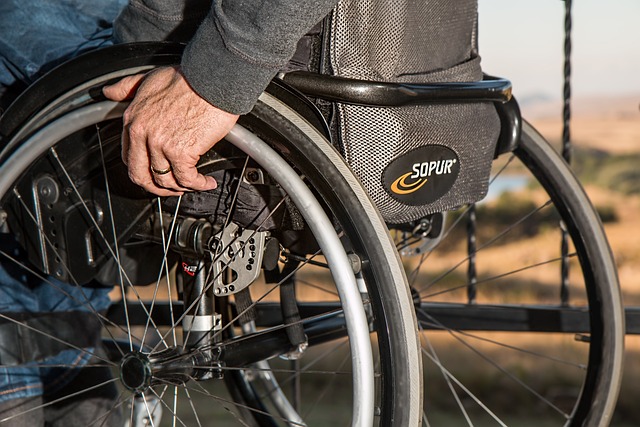Stroke Recovery Tools: Essential Aids for Rehabilitation and Independence
Recovering from a stroke is a gradual process, but the right tools can support physical, cognitive, and emotional healing. From mobility aids to therapy tech, learn which stroke recovery tools are helping survivors regain independence and confidence.

What are the most effective mobility aids for stroke survivors?
Mobility is often one of the primary concerns for stroke survivors. Regaining the ability to move independently is crucial for both physical recovery and mental well-being. Several mobility aids have proven particularly beneficial for stroke patients:
-
Walkers and Rollators: These provide stability and support for those struggling with balance or weakness on one side. Many modern rollators come with seats, allowing users to rest when needed.
-
Canes and Quad Canes: For those with milder mobility issues, canes offer support while walking. Quad canes, with their four-pronged base, provide extra stability.
-
Wheelchairs and Transport Chairs: When longer distances are involved, wheelchairs can help conserve energy and prevent fatigue. Transport chairs are lighter and more compact, making them ideal for outings.
-
Leg Lifters and Transfer Boards: These tools assist with moving from one surface to another, such as from a bed to a wheelchair, reducing the risk of falls and strain on caregivers.
By utilizing these mobility aids, stroke survivors can gradually increase their independence and confidence in moving around their environment.
How can adaptive equipment improve daily living for stroke patients?
Adaptive equipment plays a crucial role in helping stroke survivors regain independence in everyday tasks. These tools are designed to compensate for physical limitations and make daily activities more manageable:
-
Dressing Aids: Button hooks, sock aids, and long-handled shoe horns can help those with limited dexterity or range of motion to dress independently.
-
Eating Utensils: Weighted utensils, plate guards, and non-slip mats can make mealtimes easier for those with tremors or one-sided weakness.
-
Bathroom Aids: Raised toilet seats, shower chairs, and grab bars enhance safety and independence in personal hygiene tasks.
-
Reachers and Grabbers: These tools extend reach and allow for picking up objects without bending or stretching, reducing fall risks.
-
One-handed Kitchen Tools: Specialized cutting boards, jar openers, and knives designed for one-handed use can help stroke survivors prepare meals independently.
By incorporating these adaptive tools into daily routines, stroke survivors can regain a sense of control and reduce reliance on caregivers for basic tasks.
What cognitive rehabilitation tools are available for stroke recovery?
Cognitive impairments are common after a stroke, affecting memory, attention, problem-solving, and language skills. Several tools and technologies are available to aid in cognitive rehabilitation:
-
Brain Training Apps: Mobile applications and computer programs offer exercises designed to improve memory, attention, and problem-solving skills.
-
Speech Therapy Apps: For those experiencing aphasia or other language difficulties, specialized apps provide exercises to improve speech and language skills.
-
Memory Aids: Digital voice recorders, reminder apps, and smart home devices can help with memory and organization tasks.
-
Cognitive Assessment Tools: These can help track progress and identify areas needing further attention in the recovery process.
-
Virtual Reality Systems: Some rehabilitation centers use VR technology to create immersive environments for cognitive and physical therapy exercises.
Regular use of these cognitive tools, often under the guidance of a therapist, can help stroke survivors regain lost skills and develop new strategies for managing daily cognitive challenges.
How do physical therapy tools support stroke rehabilitation?
Physical therapy is a cornerstone of stroke recovery, and various tools can enhance its effectiveness:
-
Therapeutic Exercise Equipment: Resistance bands, therapy balls, and hand exercisers help improve strength, flexibility, and coordination.
-
Balance Training Systems: Balance boards and platforms with visual feedback can help improve stability and reduce fall risk.
-
Electrical Stimulation Devices: These can help activate muscles and improve motor function in affected limbs.
-
Mirror Therapy Boxes: Used to create the illusion of a functioning limb, potentially aiding in motor recovery.
-
Robotic Therapy Devices: Advanced systems that assist with repetitive movements to improve motor function in arms or legs.
These tools, when used under professional guidance, can significantly enhance the effectiveness of physical therapy sessions and support continued progress at home.
What communication aids are available for stroke survivors with aphasia?
Aphasia, a language disorder common after stroke, can significantly impact communication. Several tools are available to assist:
-
Communication Boards: Physical or digital boards with pictures, words, or symbols that users can point to for expressing needs and ideas.
-
Text-to-Speech Apps: These convert typed text into spoken words, aiding those who can type but struggle with speech.
-
Speech-Generating Devices: More advanced systems that allow users to select phrases or construct sentences that are then spoken aloud by the device.
-
Picture Exchange Communication Systems (PECS): A method using picture cards to facilitate communication, particularly helpful for those with limited verbal abilities.
-
Speech Recognition Software: Can help with writing and computer use for those with difficulty typing or using a mouse.
These communication aids can dramatically improve quality of life for stroke survivors with aphasia, facilitating interaction with family, friends, and healthcare providers.
This article is for informational purposes only and should not be considered medical advice. Please consult a qualified healthcare professional for personalized guidance and treatment.




